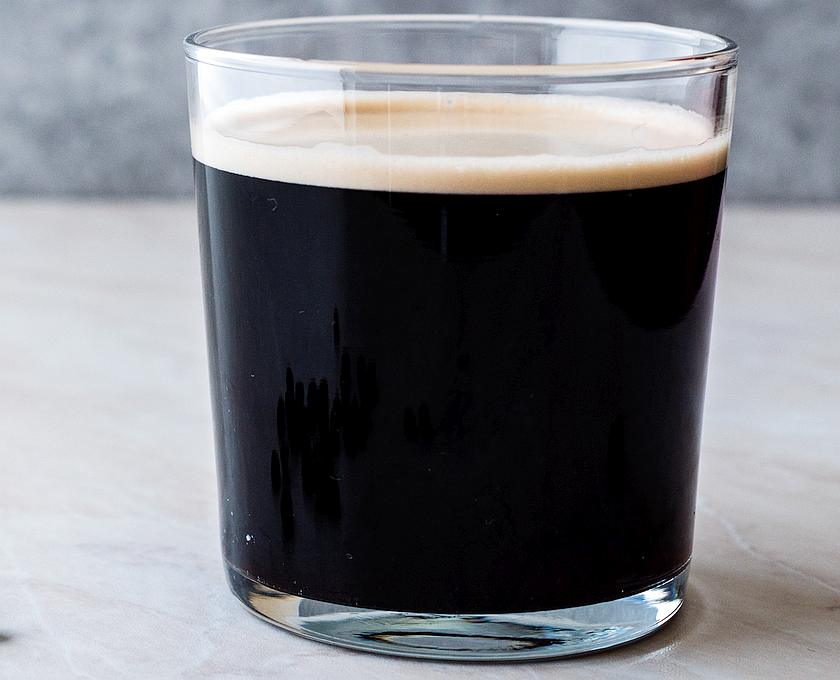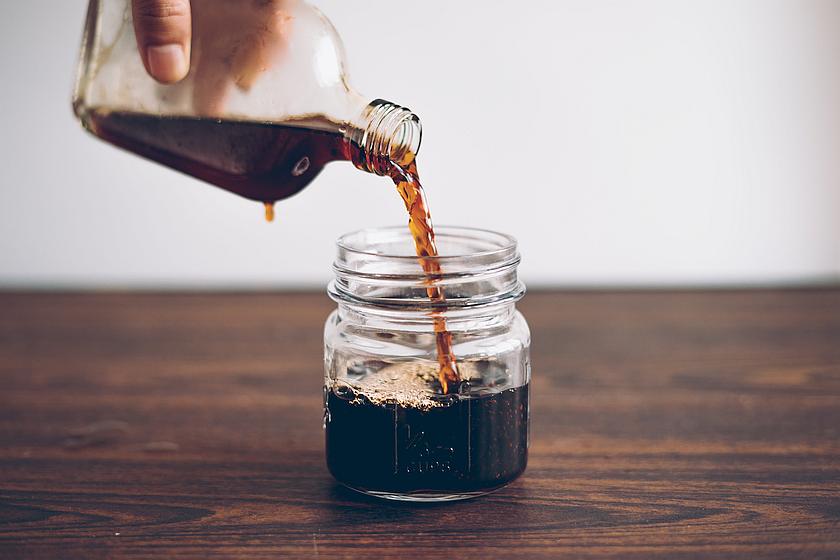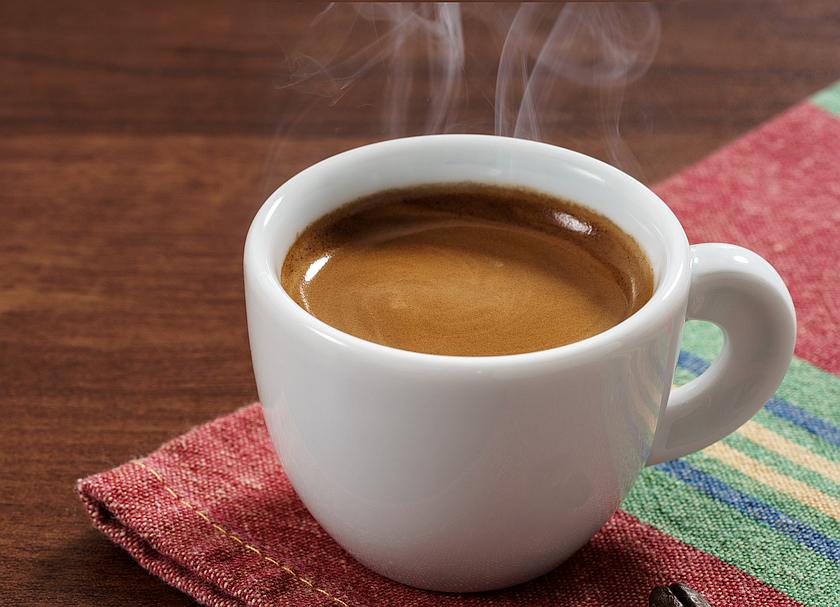Cold brew espresso is a method of brewing coffee that uses cold water to steep coffee grounds for an extended period of time. Coffee prepared this way is a strong, concentrated beverage, with a high caffeine concentration.
This coffee can be consumed as is, in small servings, much like espresso, but is served cold. This brewing method produces a coffee that is less acidic and less bitter than regular espresso. It is often served as a base for popular iced espresso coffee drinks, such as iced lattes, cold brew Americano, or Frappuccino.

In this article I will talk about cold brew espresso, and compare it to real espresso. It's more of a rant than my usual writings, but you will get some useful information from it, anyway.
Even though the name suggests a resemblance with the traditional espresso, the two coffees are quite different. The flavor profiles of the two beverages appeal to different types of coffee lovers. People who love espresso, don't enjoy as much cold brew, and vice versa. I will explain in a bit why.
Traditional Espresso vs Cold Brew Espresso
As I already mentioned cold brew espresso is different from real genuine espresso, but let's dive in and see what that means, and why the two drinks are so different.
Espresso Brewing
Espresso is a method of brewing coffee that uses hot water and pressure to extract the soluble solids from the coffee beans.
Hot water is forced under high pressure through a finely ground coffee bed. The pressure and the water temperature are combined in a unique extraction method, that produces a concentrated and flavorful coffee. This coffee is served in small portions, called shots. The standard espresso shot is 1 ounce. Espresso is prepared with special equipment called an espresso machine.
Cold Brew
For cold brew espresso the coffee grounds are steeped in cold water for an extended period of time. The resulting brew is then served concentrated, rather than diluted. The drink is served in demitasses, as shots, or used as the bas for cold, or iced coffee drinks. Here is an article that talks more about cold brew espresso and how to brew it, if you are into cold brew.
Organoleptic properties

Because cold brew espresso is made with cold water, it has a different flavor profile than traditional, hot espresso. It is less acidic and less bitter than hot brewed espresso, and it has a smoother, and sweeter taste. The cold brew concentrate has a different profile from traditional espresso, though. Espresso lovers will not get the bold and complex flavors that they love in a cold brew, so they find cold brew disappointing.
I have to note that cold brew has delicate flavors that cannot survive the heat, so you will not get these notes and flavors in any other hot brewing method.
Espresso, as a brewing method, is known for its ability to extract certain subtleties and nuances from the espresso beans that other brewing methods cannot. The pressure and the filter that allows fines to pass in the final cup, give espresso a rich and bold flavor, and a certain thickness that no other brewing method can replicate.
If we compare the TDS, (total dissolved solids), of the two coffees, there is still a considerable difference. Espresso floats between 7.5 and 12 %. Cold brew concentrate ranges between 4 and 6 % TDS. As such, you will get a much lighter cup.
Flavor and Taste Differences between Cold Brew and Espresso

I talked about the organoleptic properties of the two coffee drinks, and why are they different. Let's dive in and see how this translates in the the final cup.
Espresso is known for its thick consistency, and I showed you that TDS measurements support the conventional wisdom. But beyond that, espresso packs more vivid flavors, while cold brew is known for delicate notes.
- Acidity: Espresso will extract acidic flavors, and these are a great balancing element to other flavors and notes., although sometimes acidity is muted by the roast flavors. Cold brew doesn't extract any of the sourness, since the acidic compounds need higher temperatures to get dissolved.
- Bitterness: Espresso has its unique bitter flavor due to the high temperature and pressure, which extracts certain bitter compounds. While caffeine is the most popularly known bitter compound, chlorogenic acids (the antioxidant in coffee) are the main source of bitterness in hot coffee. Cold brew only extracts caffeine, but obviously, cannot extract chlorogenic acids.
- Caramel notes: Roasting coffee beans at high temperatures caramelizes the sugars, creating a sweet and nutty flavor. These are also released from the coffee grounds at higher temperatures, so you won't get them in the cold brew.
- Aromatics: During the espresso-making process, high temperature and pressure release volatile compounds such as aromatic oils and flavors from the coffee to create its complexity of aroma and taste. Without pressure, many of these compounds cannot be extracted.
- Smoothness: Cold brew coffee is smooth tasting, with a clean finish. Cold water cannot extract the bitter and sour stuff from the coffee grounds. The only bitter compound in the cold brew is caffeine.
- Fruity and floral notes: Cold brew coffee is also known for its fruity and floral flavors. This is because the cold water does not extract the strong tasting components such as acids and bitterness. resulting in a sweeter and more nuanced coffee. These fruity and floral notes are typically overwhelmed by acidity and bitterness in hot brewing methods.
When we talk about coffee acidity, we don't refer to the pH, which is quite similar for the two beverages. We talk about total titratable acidity, which is considerably higher in all hot brew methods, including espresso. There is an interesting research paper that explores differences between cold brew and hot brews, if you want to go deeper down the rabbit hole.
It's worth noting that depending on the coffee beans used, origin, roast, and the brewing method, the flavor profile can vary. The flavors mentioned above are general tendencies.
For those looking for taste similarities between cold brew and traditional espresso, there might be too little resemblance between the two drinks. The strength and concentration of the drink might be the only thing in common.
Cold Brew Is not Espresso
It's important to note that many people use the term “espresso” to describe a strong, or concentrated, coffee drink, but this is not correct. Espresso is term to designate the beverage brewed in a certain way, and not to describe how a coffee tastes. Espresso is indeed concentrated, but it is more than that. I have an article where I explain what espresso is, and if you read that article you'll understand better my rant today.
To add to the confusion, in Italy, when you ask for a coffee in a coffee shop, you are served an espresso. Italians call “caffè” and espresso shot.
Many people call a small concentrated coffee espresso, by association. However, espresso is so much more than that, and I talk about it here: “Why Is Espresso Special?”
Final Word
The term cold brew espresso was born when people started to realize that strong coffee is actually great, when it's brewed properly. Don't generalize that, though. Besides espresso and cold brew, there aren't any other methods that taste good when brewed concentrated.
Let's admit it, most of the times people use the word espresso because it's simpler to use. English is a pragmatic language, and we get portmanteau words more often than any other language. But cold brew espresso is not the right word to use. Why not cold brew concentrate?
Is this rant too much? Let me know.
